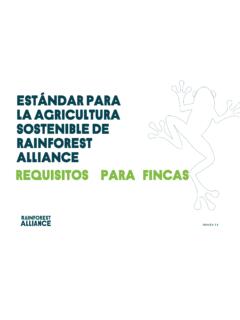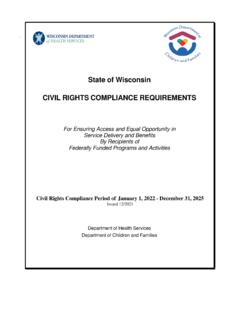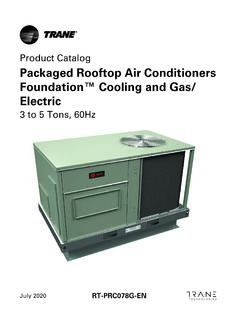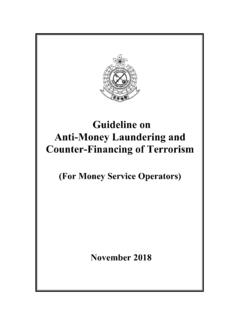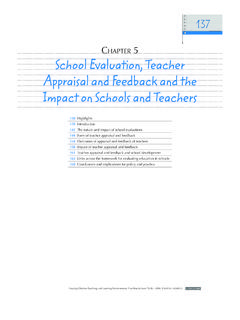Transcription of RAINFOREST ALLIANCE LABELING & TRADEMARKS POLICY
1 RAINFOREST ALLIANCE LABELING & TRADEMARKS POLICY USE AND APPROVAL OF THE RAINFOREST ALLIANCE MARKS 2020 EDITION Updated: October 2020 BUILDING CREDIBILITY THROUGH RESPONSIBLE LABELING & MARKETING 2 CONTENTS INTRODUCTION .. 3 PRE-CONDITIONS FOR SEAL USE .. 3 PRODUCT LABELING .. 4 SINGLE-INGREDIENT PRODUCTS .. 4 MULTI-INGREDIENT PRODUCTS .. 4 PALM OIL PRODUCT LABELING .. 7 DIFFERENCE TO OTHER CROPS .. 7 HERBS & SPICES PRODUCT LABELING .. 8 SINGLE-INGREDIENT PRODUCTS .. 8 MULTI-INGREDIENT PRODUCTS .. 9 FOREST PRODUCTS LABELING .. 12 DIFFERENCE TO OTHER CROPS .. 12 OTHER WAYS TO PROMOTE RAINFOREST ALLIANCE CERTIFICATION .. 13 CORPORATE MATERIALS .. 13 RAINFOREST ALLIANCE MARKETING SUPPORT .. 13 THE APPROVAL PROCESS .. 14 APPLYING FOR APPROVAL .. 14 PREPARING MATERIALS FOR APPROVAL .. 15 APPROVAL TIMELINES .. 15 APPROVAL VALIDITY .. 16 OTHER USERS OF RAINFOREST ALLIANCE TRADEMARKS .
2 16 EXCEPTIONS .. 17 NON-FROG VERSION .. 17 FORCE MAJEURE .. 17 TEMPORARY SUPPLY SHORTAGES .. 17 OTHER EXCEPTIONS .. 18 ABOUT THIS DOCUMENT .. 19 LANGUAGE VERSIONS .. 19 CONTINUOUS IMPROVEMENT .. 19 CONTACT US .. 19 APPENDICES .. 20 APPENDIX A: THE RAINFOREST ALLIANCE MARKS .. 20 APPENDIX B: HERBS AND SPICES .. 21 APPENDIX C: CERTIFICATION STANDARDS .. 22 APPENDIX D: PHASE OUT OF LEGACY MARKS .. 22 3 INTRODUCTION Following the merger of UTZ and the RAINFOREST ALLIANCE in 2018, we are proud to debut a new certification seal and LABELING and TRADEMARKS POLICY for 2020 and beyond. The requirements specified here are designed to optimize accuracy, credibility and consistency in the use of the RAINFOREST ALLIANCE certification seal and trademarks1 worldwide to protect the value and integrity of the RAINFOREST ALLIANCE , and brands using our seal.
3 As an increasingly recognized symbol globally, the RAINFOREST ALLIANCE certification seal assures businesses and consumers alike that buying a labeled product supports more environmentally and socially responsible practices. The objective of this document is to assist businesses in: a) Determining if products are eligible to carry the RAINFOREST ALLIANCE certification seal or other marks1, b) understanding the LABELING requirements that relate to their specific case, and c) following the process of obtaining approval to use one of the RAINFOREST ALLIANCE marks1. This document is complemented with the RAINFOREST ALLIANCE Seal Graphic Guidelines which provides a set of additional formatting rules for designers to follow when developing materials carrying the RAINFOREST ALLIANCE marks. All users of our marks need to comply with the rules set out in both documents.
4 The requirements set out in this document are applicable to both product packaging designs that carry the seal and off-pack materials that promote these products or partnerships with the RAINFOREST ALLIANCE . This includes materials for staff, business partners, or the public. PRE-CONDITIONS FOR SEAL USE Seal use will not be permitted until compliance with the relevant certification standards and systems (both Farm and Supply Chain) is achieved, and approval to use one of the RAINFOREST ALLIANCE marks has been granted. See Appendix C for more details on these during our transition to a new Sustainable Agriculture Standard. 1 Marks include: a) the RAINFOREST ALLIANCE certification seal b) the name RAINFOREST ALLIANCE c) the RAINFOREST ALLIANCE corporate logo 4 PRODUCT LABELING Product LABELING requirements are determined by two main factors: a) whether a product is made of a single, or multiple ingredients, and b) how much of a given ingredient is RAINFOREST ALLIANCE Certified (RAC).
5 See Appendix C for further information on what is included in the definition of RAC. See chapter 5 for information on LABELING forest products. SINGLE-INGREDIENT PRODUCTS Definition: A single ingredient product is defined as one that includes only one crop or ingredient. For example, a bag of ground coffee would be classified as a single ingredient product, even if it contained a mixture of both Arabica and Robusta beans in the blend. Eligibility for Seal Use A single-ingredient product is eligible to carry the seal on pack when it: EITHER Physically contains (through identity preserved or segregated supply chains) at least 90% RAINFOREST ALLIANCE Certified content, OR If 100% of the equivalent certified volume has been purchased from RAC farms via a certified mass balance supply chain, (crops that allow the mass balance option include cocoa, orange juice, palm oil and hazelnuts2).
6 LABELING Requirements Single ingredient products that qualify for seal use according to the above can carry the RAC seal on their packaging if they comply with the graphic guidelines, and: 1. Web Link: Include a reference to on consumer facing product packaging. We recommend including the statement RAINFOREST ALLIANCE Certified. Find out more at Small stickers (less than 25mm wide or tall) for use on fresh fruit or vegetables may omit the url on the sticker as long as is included on the outer case or box, and a link to is on the product s or brand s website. MULTI-INGREDIENT PRODUCTS Definition: A multi-ingredient product is defined as one that includes more than one ingredient, of which at least one is RAC. For example, a chocolate bar that includes RAINFOREST ALLIANCE certified cocoa alongside multiple other ingredients. 2 See chain of custody standard and annex for current list 5 Eligibility for Seal Use Core Ingredient In order to qualify for use of the RAINFOREST ALLIANCE certification seal, an ingredient within a multi-ingredient product must first be classified as a core ingredient.
7 A core ingredient is defined as Requirement Example 1. An ingredient that makes up at least 30% of the entire product recipe. Apples, pineapple, bananas (etc.) in a juice, smoothie, or herbal tea bag OR 2. An ingredient that is included in the product name and/or imagery on front of pack. Vanilla in French Vanilla Ice Cream , cocoa in Cocoa Butter Lip Balm , Oranges in a multi-vitamin juice , and visualised on the front of the pack OR 3. An ingredient that is essential to the formulation of a product. Ginger in a ginger cookie; tea leaves in an iced tea drink; hazelnuts in a nougat bar. Note: designs based on the third category may take longer to approve because the determination of essential can be subjective.
8 We always consider cocoa to be essential to the formulation of chocolate products. Content / Sourcing A multi-ingredient product is eligible to carry the RAC seal on pack in reference to a core ingredient when it: EITHER Physically contains (through identity preserved or segregated supply chains) at least 90% of the core ingredient content as certified, OR If 100% of the equivalent certified volume (of the core ingredient) has been purchased from RAC farms via a certified mass balance supply chain3. LABELING Requirements Multi-ingredient products that meet both the core ingredient and content / sourcing requirements can use the RAC seal on their packaging when they comply with the graphic guidelines, and: 1. Seal: Identify the certified crop name under the seal, so it s clear the seal refers to the certified ingredient. Ingredients that originate from the same crop type (such as cocoa liquor and cocoa butter) should be qualified with the seal with the crop name (cocoa in this example); AND 3 Only for crops that allow that option such as cocoa, palm oil, orange juice or hazelnuts see the chain of custody requirements and annex for current list 6 2.
9 Ingredients List: Place an asterisk (or another marker) directly after the certified ingredient(s) in the list of ingredients. The same symbol is then additionally placed at the end of the ingredient list, followed by the text * RAINFOREST ALLIANCE Certified . Where not legally permitted, the marker is omitted and the text next to the ingredient list identifies the certified ingredients instead, RAINFOREST ALLIANCE Certified cocoa ; AND 3. Web Link: Include a reference to on consumer facing product packaging. We recommend including the statement Find out more at after the reference in the ingredients list above. Example: Chocolate Ice Cream Seal Ingredients List Cocoa + Ingredients: Milk, Cane Sugar, Cream, Cocoa Powder1, Whey, Tara Gum.
10 1 RAINFOREST ALLIANCE Certified. Find out more at Multi-ingredient products where the certified core ingredient represents at least 95% of the total product formulation by weight (such as flavored coffee beans) may be labeled without identifying a specific crop name under the seal. However, the certified ingredient must still be identified in the list of ingredients and the web link must be used. When a multi-ingredient product is eligible to use the seal but elects not to, or when a 90%-100% certified ingredient in a multi-ingredient product does not qualify as core, the certified ingredient may be highlighted in text on pack and/or indicated in the list of ingredients with a reference to without using the seal on the product. These products may also be promoted with the seal off pack. Multiple Certified Ingredients When a multi-ingredient product includes more than one certified ingredient, all of them must meet the content / sourcing requirements, but only one needs to meet the core ingredient requirement.



